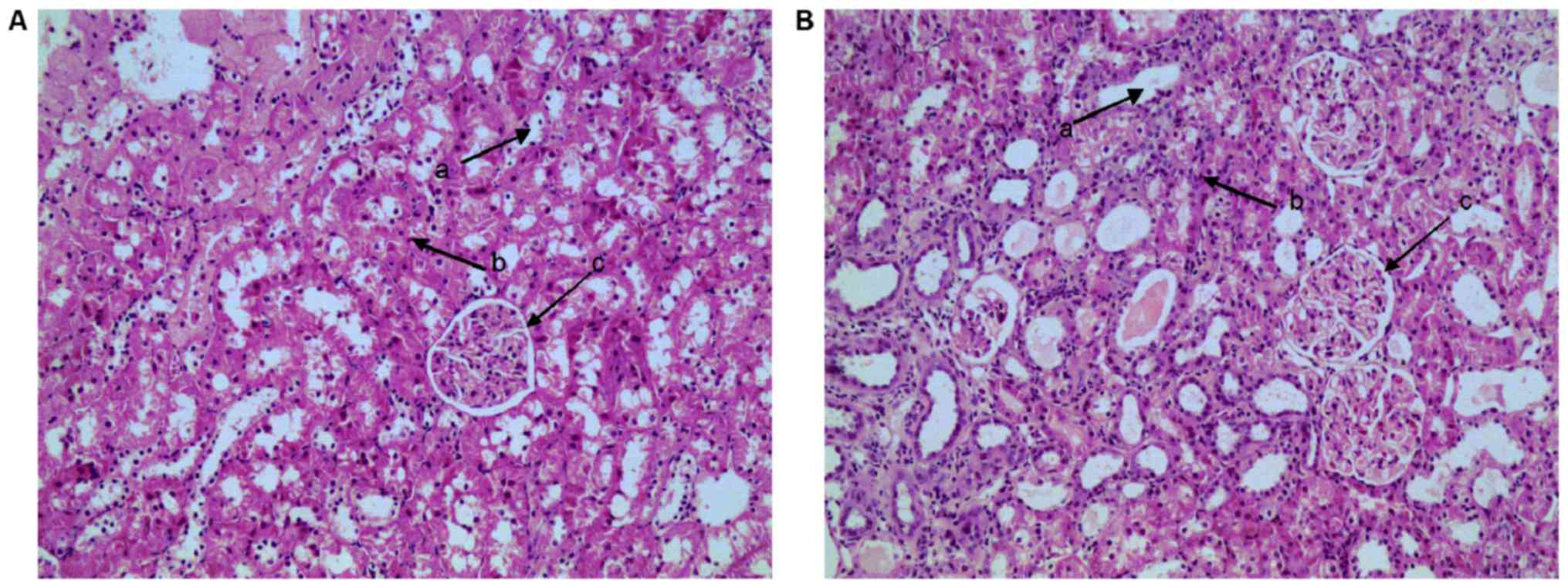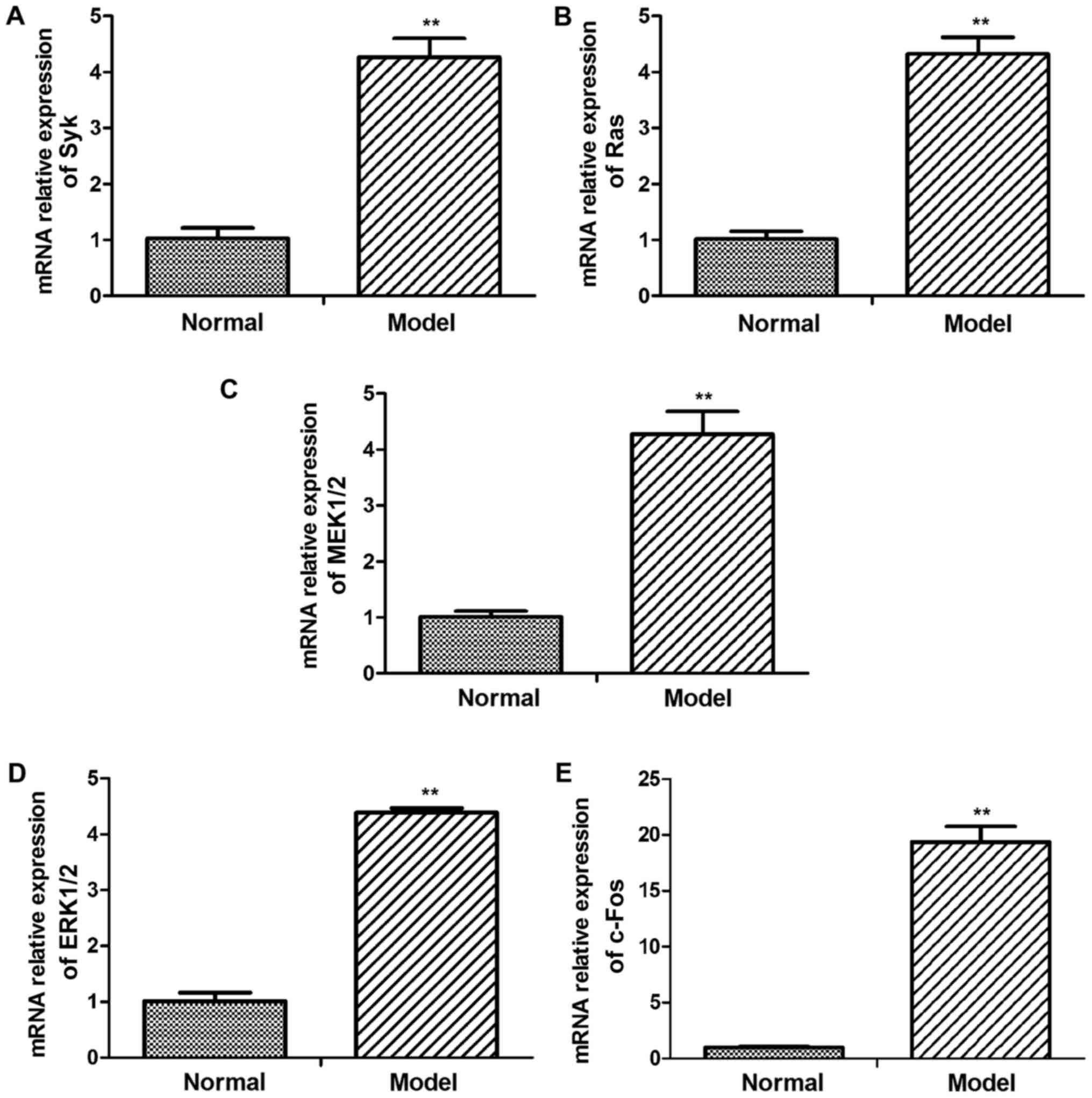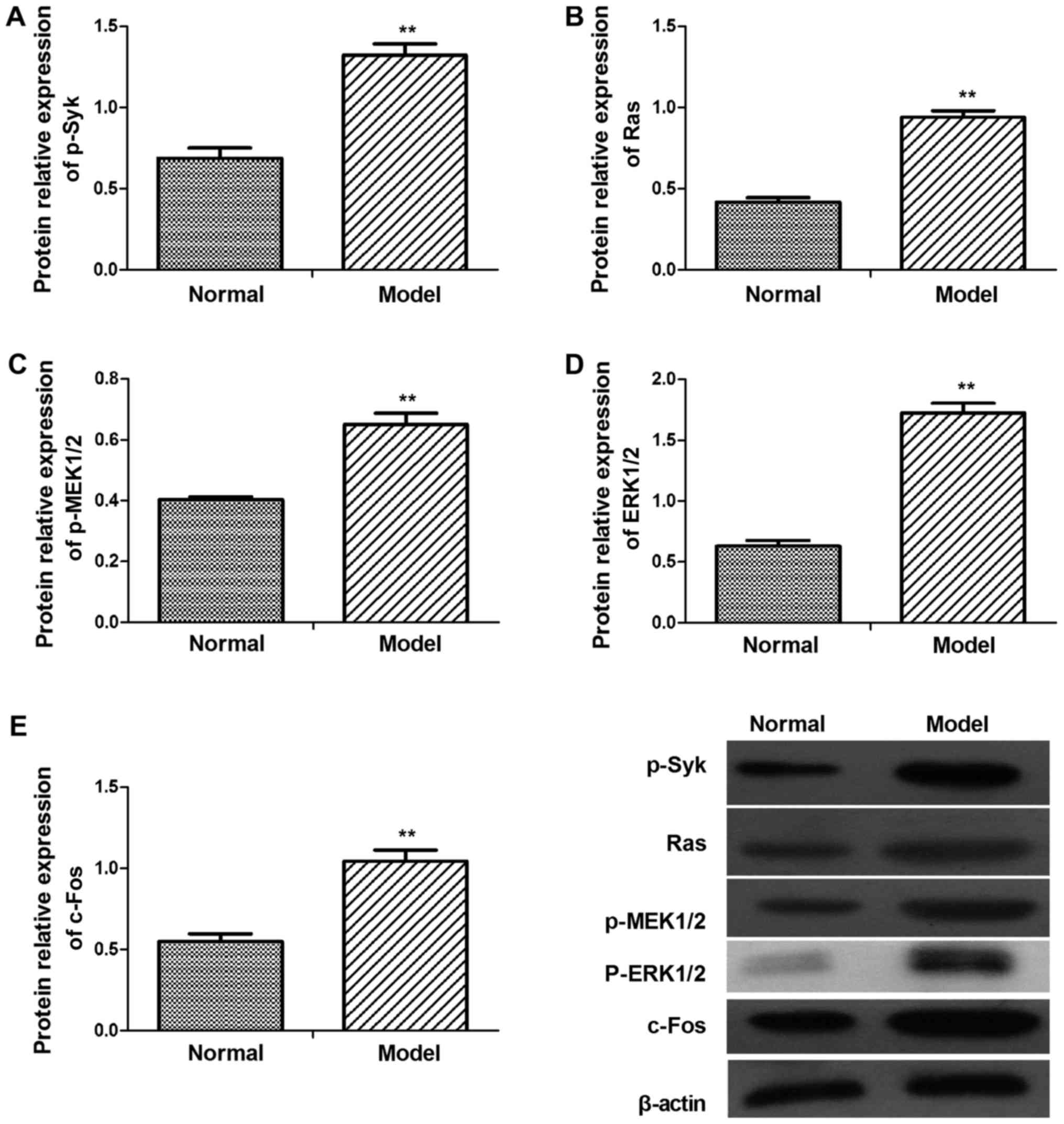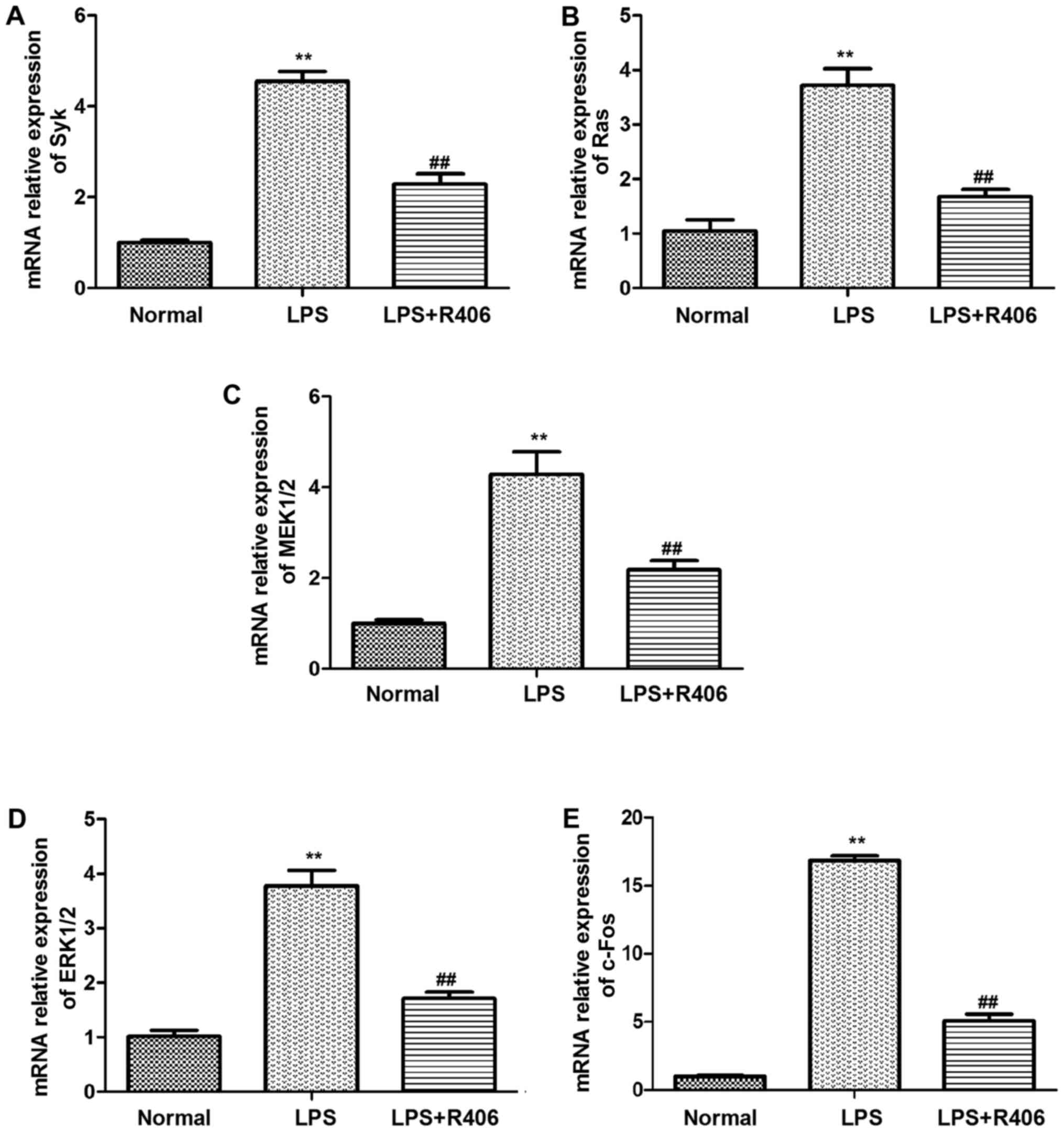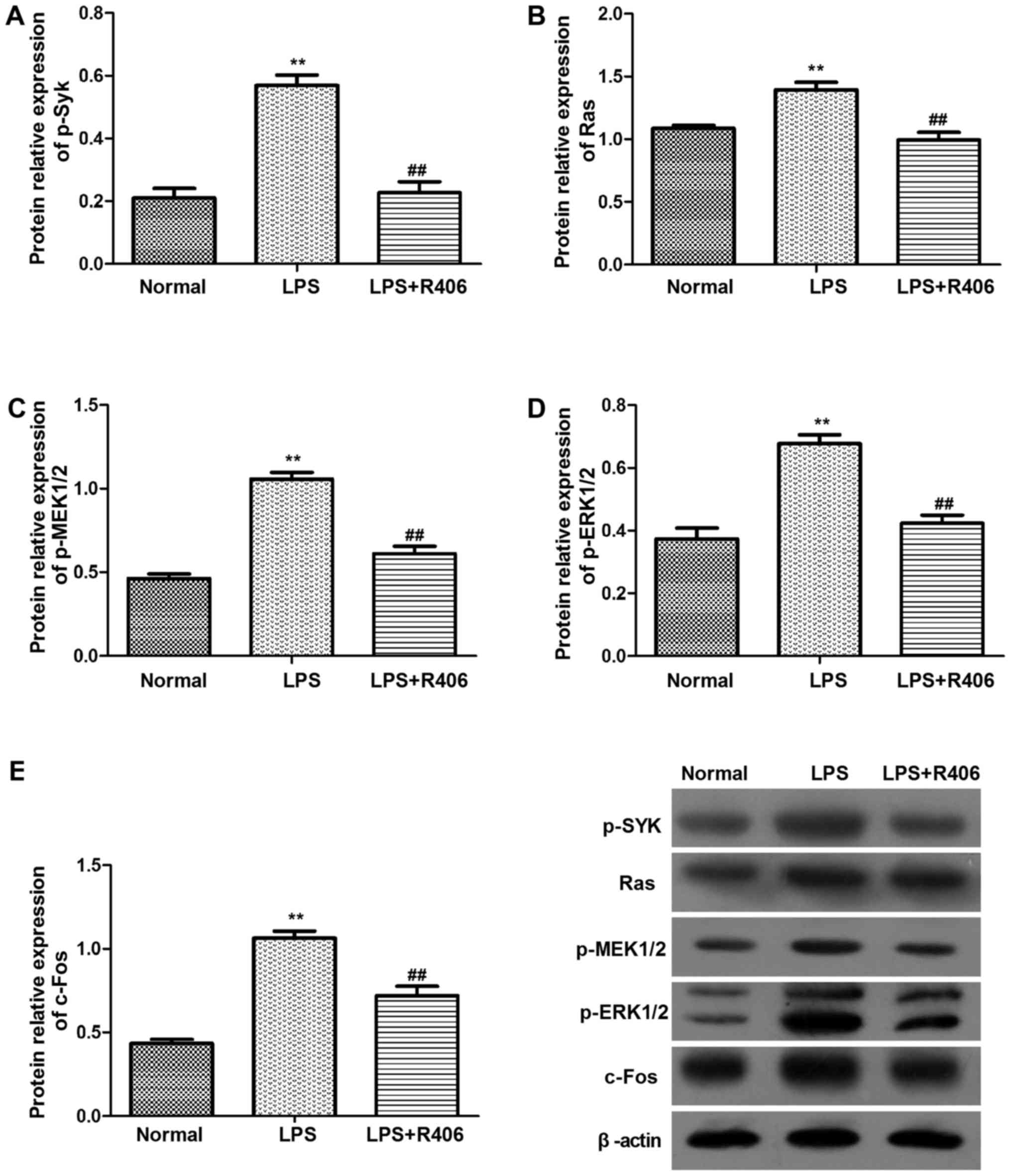|
1
|
Floege J and Amann K: Primary
glomerulonephritides. Lancet. 387:2036–2048. 2016. View Article : Google Scholar : PubMed/NCBI
|
|
2
|
Zhang H, Ying Y, Chen Y, Lu X and Huang Y:
Effect of chronic glomerulonephritis on the semen quality and
cytokines in the semen of infertile males. Am J Reprod Immunol.
77:2017.https://doi.org/10.1111/aji.12598simple10.1111/aji.12598
View Article : Google Scholar
|
|
3
|
Chebotareva NV, Bobkova IN, Neprintseva
NV, Kozlovskaia LV and Malkandueva ZT: Urinary biomarkers for
podocyte injury: Significance for evaluating the course and
prognosis of chronic glomerulonephritis. Ter Arkh. 87:34–39. 2015.
View Article : Google Scholar : PubMed/NCBI
|
|
4
|
Satirapoj B, Jirawatsiwaporn K,
Tangwonglert T and Choovichian P: Performance of the estimated
glomerular filtration rate creatinine and cystatin C based
equations in Thai patients with chronic glomerulonephritis. Int J
Nephrol Renovasc Dis. 8:145–150. 2015. View Article : Google Scholar : PubMed/NCBI
|
|
5
|
Dudnyk V, Zvenigorodska A and Guminska G:
Genetic aspects of chronic glomerulonephritis. Lik Sprava. 159–160.
2015.(In Ukrainian). PubMed/NCBI
|
|
6
|
Hule GP, Karmarkar MG, Cameron A, Hase N,
Khopkar U, Mehta PR, McNeilly CL, McMillan D and Sriprakash KS:
Seropositivity for antibodies to DRS-G, a virulence factor from
streptococcus dysgalactiae subsp. equisimilis, is an independent
risk factor for poststreptococcus glomerulonephritis and chronic
kidney disease in Mumbai, India. Clin Vaccine Immunol. 22:938–942.
2015. View Article : Google Scholar : PubMed/NCBI
|
|
7
|
Gao JR, Qin XJ, Jiang H, Wang T, Song JM
and Xu SZ: Screening and functional analysis of differentially
expressed genes in chronic glomerulonephritis by whole genome
microarray. Gene. 589:72–80. 2016. View Article : Google Scholar : PubMed/NCBI
|
|
8
|
Campa MJ, Moody MA, Zhang R, Liao HX,
Gottlin EB and Patz EF Jr: Interrogation of individual intratumoral
B lymphocytes from lung cancer patients for molecular target
discovery. Cancer Immunol Immunother. 65:171–180. 2016. View Article : Google Scholar : PubMed/NCBI
|
|
9
|
Zeng KW, Wang S, Dong X, Jiang Y, Jin HW
and Tu PF: Sesquiterpene dimmer (DSF-27) inhibits the release of
neuroinflammatory mediators from microglia by targeting spleen
tyrosine kinase (Syk) and Janus kinase 2 (Jak2): Two major
non-receptor tyrosine signaling proteins involved in inflammatory
events. Toxicol Appl Pharmacol. 275:244–256. 2014. View Article : Google Scholar : PubMed/NCBI
|
|
10
|
Wu L, Zhang L, Zhao J, Ning X, Mu C and
Wang C: Cloning and expression of a transcription factor activator
protein-1 (AP-1) member identified from manila clam Venerupis
philippinarum. Gene. 557:106–111. 2015. View Article : Google Scholar : PubMed/NCBI
|
|
11
|
Lee DS, Yang SH, Kim HL, Joo KW, Lim CS,
Chae DW, Kim S, Lee JS and Kim YS: Recombinant uteroglobin prevents
the experimental crescentic glomerulonephritis. Kidney Int.
66:1061–1067. 2004. View Article : Google Scholar : PubMed/NCBI
|
|
12
|
Gohda T, Makita Y, Shike T, Funabiki K,
Shirato I and Tomino Y: Dilazep hydrochloride, an antiplatelet
drug, inhibits lipopolysaccharide-induced mouse mesangial cell IL-6
secretion and proliferation. Kidney Blood Press Res. 24:33–38.
2001. View Article : Google Scholar : PubMed/NCBI
|
|
13
|
Zhao H, Liu Z, Shen H, Jin S and Zhang S:
Glycyrrhizic acid pretreatment prevents sepsis-induced acute kidney
injury via suppressing inflammation, apoptosis and oxidative
stress. Eur J Pharmacol. 781:92–99. 2016. View Article : Google Scholar : PubMed/NCBI
|
|
14
|
Gao JR, Qin XJ, Jiang H, Wang T, Song JM
and Xu SZ: The effects of Qi Teng Xiao Zhuo granules, traditional
Chinese medicine, on the expression of genes in chronic
glomerulonephritis rats. J Ethnopharmacol. 193:140–149. 2016.
View Article : Google Scholar : PubMed/NCBI
|
|
15
|
Livak KJ and Schmittgen TD: Analysis of
relative gene expression data using real-time quantitative PCR and
the 2(-Delta Delta C(T)) method. Methods. 25:402–408. 2001.
View Article : Google Scholar : PubMed/NCBI
|
|
16
|
Sun LY, Wang Y, Chen SF, Sun ML and Li XM:
The effects of strict dietary salt restriction on blood pressure
and proteinuria in chronic glomerulonephritis patients. Zhonghua
Nei Ke Za Zhi. 48:995–998. 2009.(In Chinese). PubMed/NCBI
|
|
17
|
Zhong WQ, Liu GX, Yang YM, Cai X and Huang
ZL: Clinical effect of treatment with lipo-prostaglandin E1 on the
patients with chronic glomerulonephritis. Zhongguo Wei Zhong Bing
Ji Jiu Yi Xue. 16:292–294. 2004.(In Chinese). PubMed/NCBI
|
|
18
|
Wang NH: Clinical research on effects of
the integrative medicine on chronic nephritis. Clin J Chin Med.
10:94–95. 2015.(In Chinese).
|
|
19
|
Ding SY, Zheng PD, He LQ, Hou WG, Zou Y
and Gao JD: The research on xiaochaihu decoction improving the
inflammation of chronic glomerulonephritis patients and relieving
the proteninuria. Zhongguo Zhong Xi Yi Jie He Za Zhi. 33:21–26.
2013.(In Chinese). PubMed/NCBI
|
|
20
|
Chiu HY, Huang HL, Li CH, Yin YJ, Chen HA,
Hsu ST, Lin SJ, Tsai TF and Ho SY: Increased risk of
glomerulonephritis and chronic kidney disease in relation to the
severity of psoriasis, concomitant medication, and comorbidity: A
nationwide population-based cohort study. Br J Dermatol.
173:146–154. 2015. View Article : Google Scholar : PubMed/NCBI
|
|
21
|
Gobessi S, Laurenti L, Longo PG, Carsetti
L, Berno V, Sica S, Leone G and Efremov DG: Inhibition of
constitutive and BCR-induced Syk activation downregulates Mcl-1 and
induces apoptosis in chronic lymphocytic leukemia B cells.
Leukemia. 23:686–697. 2009. View Article : Google Scholar : PubMed/NCBI
|
|
22
|
Ying H, Li Z, Yang L and Zhang J: Syk
mediates BCR- and CD40-signaling integration during B cell
activation. Immunobiology. 216:566–570. 2011. View Article : Google Scholar : PubMed/NCBI
|
|
23
|
Li HL, Forman MS, Kurosaki T and Puré E:
Syk is required for BCR-mediated activation of p90Rsk, but not
p70S6k, via a mitogen-activated protein kinase-independent pathway
in B cells. J Biol Chem. 272:18200–18208. 1997. View Article : Google Scholar : PubMed/NCBI
|
|
24
|
Vogel US, Dixon RA, Schaber MD, Diehl RE,
Marshall MS, Scolnick EM, Sigal IS and Gibbs JB: Cloning of bovine
GAP and its interaction with oncogenic ras p21. Nature. 335:90–93.
1988. View
Article : Google Scholar : PubMed/NCBI
|
|
25
|
Nishiyama A, Yao L, Nagai Y, Miyata K,
Yoshizumi M, Kagami S, Kondo S, Kiyomoto H, Shokoji T, Kimura S, et
al: Possible contributions of reactive oxygen species and
mitogen-activated protein kinase to renal injury in
aldosterone/salt-induced hypertensive rats. Hypertension.
43:841–848. 2004. View Article : Google Scholar : PubMed/NCBI
|
|
26
|
Geng W, Wei R, Liu S, Tang L, Zhu H, Chen
P, Wu J, Zhang X, Zhu F, Yin Z and Chen X: Shenhua Tablet inhibits
mesangial cell proliferation in rats with chronic anti-Thy-1
nephritis. Biol Res. 49:172016. View Article : Google Scholar : PubMed/NCBI
|
|
27
|
Zhang MX, Li L and Wang XY: Expression of
Raf kinase inhibitor protein and p-ERK in renal tissues of diabetic
rats. Chin J Pathophysiol. 29:358–360. 2013.(In Chinese).
|
|
28
|
Chen D, Fong HW and Davis JS: Induction of
c-fos and c-jun messenger ribonucleic acid expression by
prostaglandin F2alpha is mediated by a protein kinase C-dependent
extracellular signal-regulated kinase mitogen-activated protein
kinase pathway in bovine luteal cells. Endocrinology. 142:887–895.
2001. View Article : Google Scholar : PubMed/NCBI
|
|
29
|
Zu N, Li P, Li N, Choy P and Gong Y:
Mechanism of saikosaponin-d in the regulation of rat mesangial cell
proliferation and synthesis of extracellular matrix proteins.
Biochem Cell Biol. 85:169–174. 2007. View
Article : Google Scholar : PubMed/NCBI
|
|
30
|
Chen D, Li Y, Mei Y, Geng W, Yang J, Hong
Q, Feng Z, Cai G, Zhu H, Shi S, et al: miR-34a regulates mesangial
cell proliferation via the PDGFR-β/Ras-MAPK signaling pathway. Cell
Mol Life Sci. 71:4027–4042. 2014. View Article : Google Scholar : PubMed/NCBI
|















